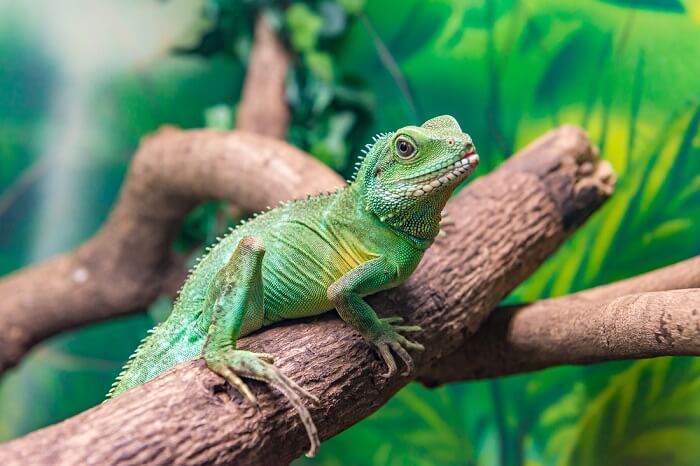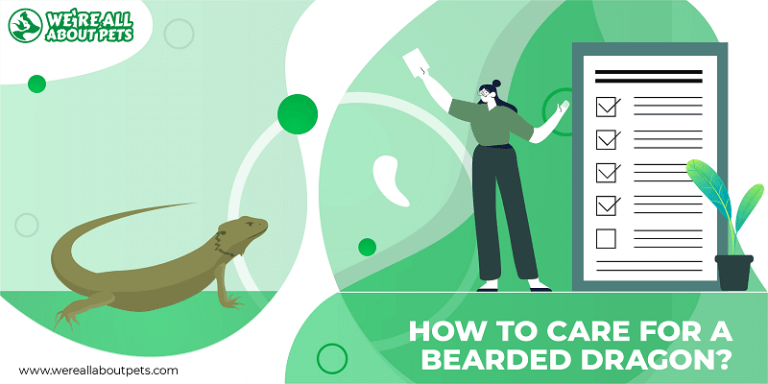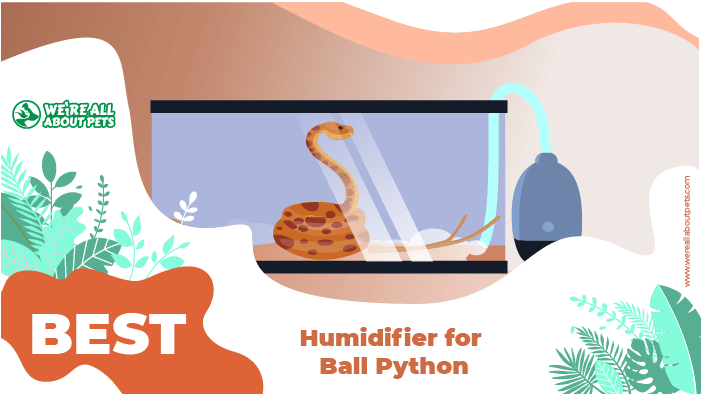The 6 Best Pet Lizards For The First-Time Pet Owners
This page contains affiliate links. We may earn money or products from the companies mentioned in this post through our independently chosen links, which earn us a commission. Learn More
You’re likely here reading this article because you’re considering opening your home to a new pet lizard. I would like to commend you on doing your research first.
Lizards can make great pets, but selecting the wrong one as a first-time pet, or getting one without knowing the time, space and cost commitments can be disastrous and make a good experience go bad for you and for your new pet.
In this article, I’ll highlight some of the general requirements that you need to be aware of when keeping a pet lizard, then I’ll list some of the lizards most well suited for the first-time lizard owner to help you start your selection.
Caring For A Lizard In General
Like all reptiles, lizards are ectothermic. That means they are dependent on their environment (and your care) to maintain a normal body temperature. Many people are aware of that from biology classes.
What you may not know is that they also have specific needs when it comes to humidity, available space, diet, nutritional supplements, lighting, substrate, cage decorations and enrichment. Most of their life will be lived in the enclosure you provide, so it needs to be set up and maintained in a way that will help ensure all the nutritional, physical and mental needs will be met.
With some animals this can be exceedingly difficult, but it’s a set of skills that’s learned, like everything else. Selecting the right pet for your fist (or first few) lizards can give you the opportunity to learn the skills on a lizard that has fewer demanding needs and is more forgiving of lapses as you learn. As you learn, you’ll gain great satisfaction from seeing you pet lizard thrive under your care.
You also need to plan for medical care. Regular wellness visits with a veterinarian are a best practice for maintaining optimal health for your pet lizard. I recommend you find a veterinarian in your area in advance. Remember, not all veterinarians are well trained and experienced in the medical needs of reptiles. You can begin your search here.
Finally, an important note about reptiles for the humans in their lives. All reptiles are capable of shedding salmonella, even when healthy. For anyone who has a compromised immune system or for small children, it’s wise to check with your family physician first. You can find more information here.
The Top Lizards For New Reptile Owners
1. Leopard Gecko
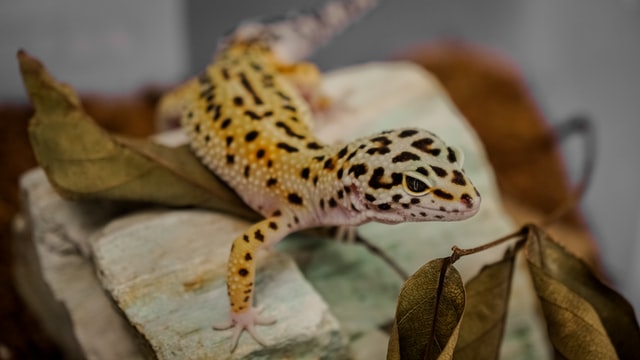
- Origin: dry and semi-desert areas in Afghanistan, Iraq, Iran, and northwest India
- Price: $30 to $100
- Size: 6.5-8 inches
- Color: over 100 different color morphs and combinations
Leopard geckoes are hearty animals that generally do well as pets. They are good with being handled and they stay relatively small, so the enclosure can be 10-15 gallons for an adult. Temperature needs are fairly simple.
They do best with some low-level UV lighting, but with a good diet and supplements, the need is low. Humidity is also easier to maintain with them: normal room humidity and a humid hide with damp moss meet the needs of most of them well. They live 7-10 years in captivity with good care.
2. Bearded Dragon
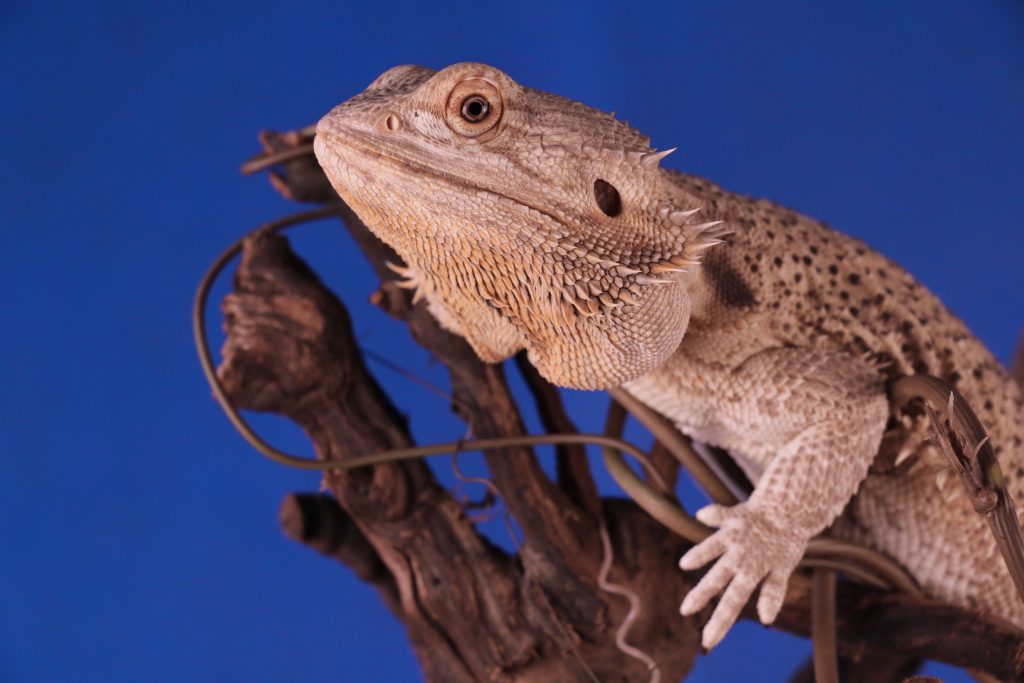
- Origin: inland Australia
- Price: $40 to $900
- Size: 12 – 24 inches
- Color: tan, yellow, olive-green, and red
Bearded dragons are some of the most popular pet lizards in the world. They’re native to the Australian outback but are readily bred in captivity. They do very well with handling and free time. Interactions between beardies and human caretakers can be very rewarding. They’re interactive and can be trained easily.
Since they live in the desert, they do need strong UV lighting and a hot basking area. Humidity can be on the lower end as long as they have access to a large water bowl and have their enclosure misted regularly to prevent dehydration. In captivity, they live 8-10 years. An enclosure for an adult will need to be at least 3 feet by 1.5-2 feet long.
3. Uromastyx
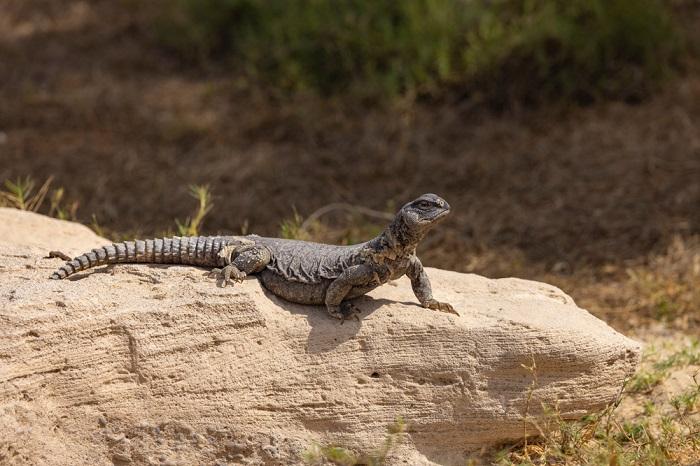
- Origin: Algeria, Mali, Niger
- Price: $100 to $200
- Size: 10 – 18 inches
- Color: grey, mottled red, orange, green, or yellow
For a slightly more unusual lizard, select a uromastyx. This lizard is native to rocky terrain from Northern Africa through the Middle East and South Asia. They tolerate dry conditions well but will need a very hot basking area (110-120°F). Many have very ornate color patterns and a really cool tail!
They do well with handling and eat a variety of vegetables and insects. Like Bearded dragons, they will require an intense UV bulb that will need to be replaced every 6 months. Space requirements are similar to the bearded dragon. With good care, they will live in excess of 15-20 years in captivity.
4. Blue Tongued Skink
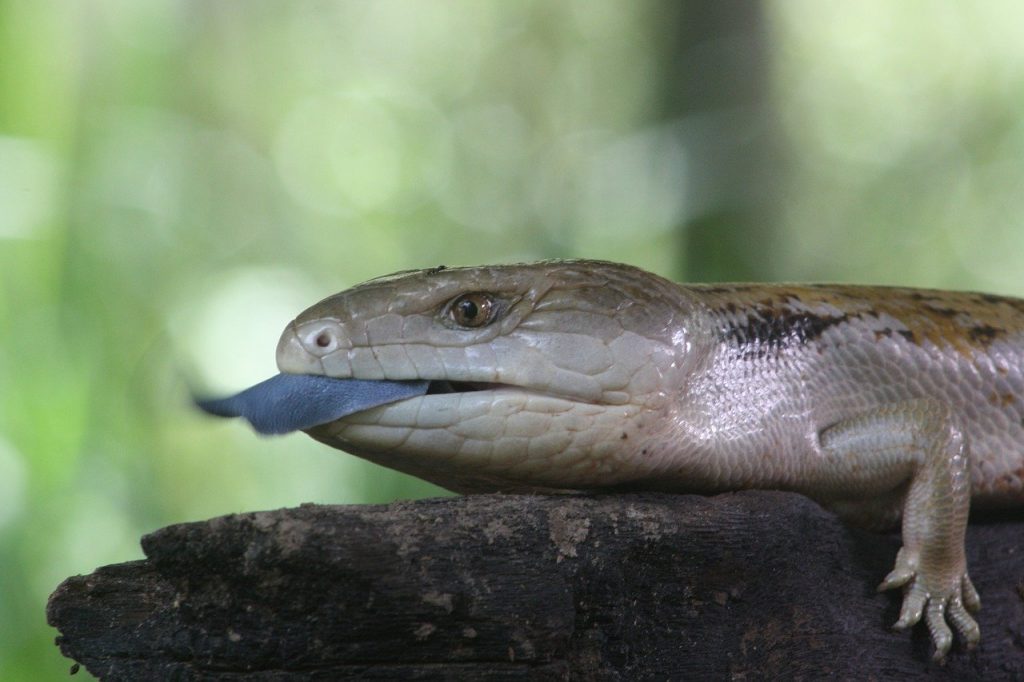
- Origin: Australia, New Guinea, and Tasmania
- Price: $150 – $250
- Size: 15.5 – 19 inches
- Color: mix of brown, orange, black and gray
These are really cool, short-legged lizards with a bright blue tongue that comes out frequently to smell the air. Like Bearded dragons, they’re intelligent animals an can learn basic tricks. Interaction with people is well tolerated and may even be enjoyed by the skink.
Cage sizes are similar to Bearded dragons and uromastyx: 3 x 2 feet of floor space. Heat requirements are easier than the uromastyx with a basking area of 100°F. They do require a UV light that will be changed out every 6 months. They eat a variety of vegetables and some insects.
5. Crested Gecko
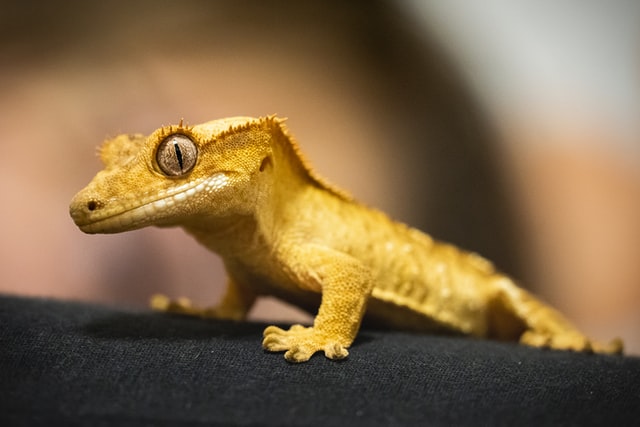
- Origin: New Caledonia
- Price: $50 to $100
- Size: 6–10 inches
- Color: it ranges from very pale cream to near-black and from buckskin and olive to reds and yellows
If you want or need to have a tall cage rather than a long cage, crested geckos can be a great choice. They stay smaller than most other lizards on this list, no more than 8 inches long from nose to tail-tip. Crested geckos also have adorable “eyelashes” that make them uniquely cute!
Heating is less strict and easier to maintain. They don’t have a strict need for UV lighting, but would likely benefit from low-intensity UVB. There is a powdered diet available that can make up most of the nutritional needs for these lizards, making their nutrition easier than most.
The trickiest part of their care is a higher humidity requirement. They will need the enclosure to maintain 50-70% humidity. In some cases, misting the cage daily will be enough, but in dry areas they may need to have a continuous misting system.
6. Chinese Water Dragon
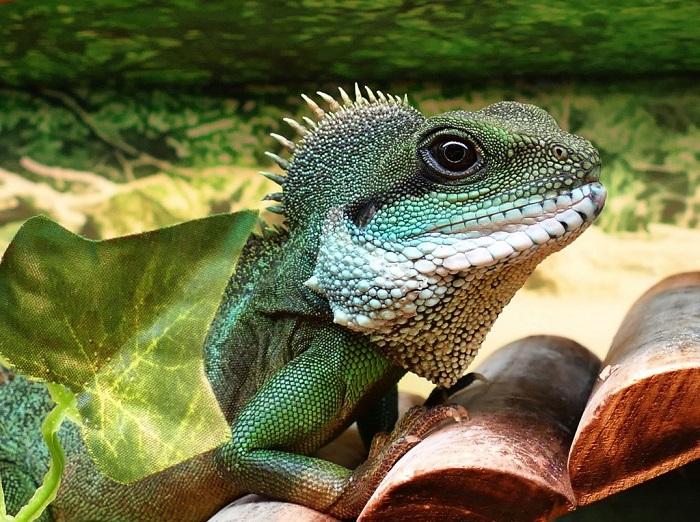
- Origin: Thailand, Vietnam, Cambodia, Laos, Burma and southern China
- Price: $50
- Size: 36 inches
- Color: variation of green with a tan or brown-banded tail
Chinese water dragons are tree dwellers from a humid environment like the crested geckos, but they get much larger. Adults can be 3 feet long, so they’re great if you want a larger lizard to climb in a tall cage in your home. An adult will need an enclosure at least 4 feet tall with very high humidity and numerous branches for climbing.
They require best UV lighting. With the space requirements and higher humidity, they are some of the harder to maintain on this list, but still reasonable for a beginner who’s willing to dedicate time to learn and maintain a good enclosure.
Final Thoughts
Once you have decided which of these lizards is most interesting to you, the next step is to dive into studying specific needs so that you can prepare a good habitat. Make sure you check multiple reputable sources to ensure you have the best information.
All of these animals are readily available as captive-bred animals. That’s the best for their health and the health of the wild species that would otherwise be caught to be pets. To read more about the importance of choosing captive-bred animals, look here.
Congratulations on this first step and enjoy your pet lizard!

